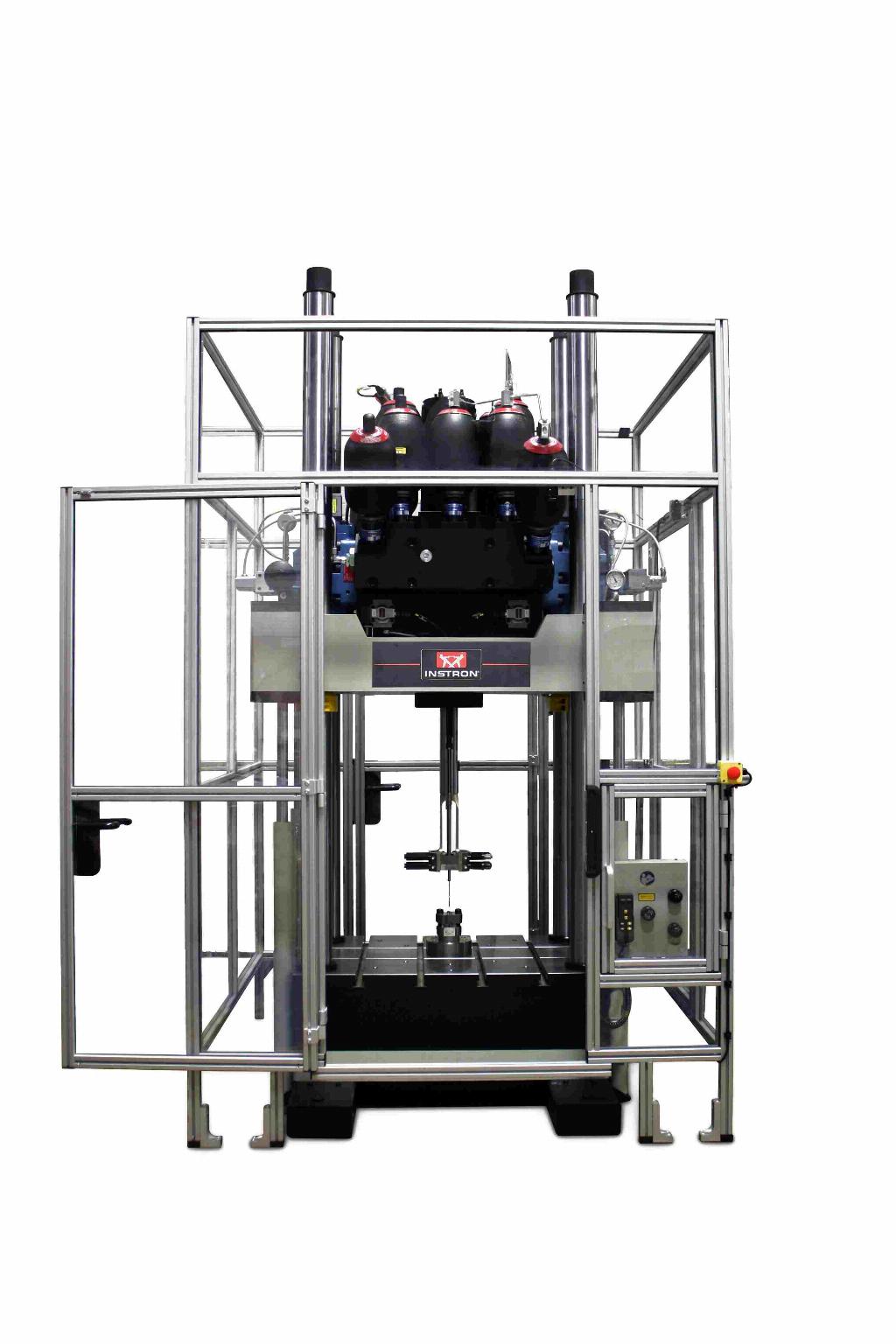Putting composites to the test

In a Q&A session, Ian McEnteggart, Instron’s composites marketing manager, tells Composites in Manufacturing about the kinds of trends and demands associated with the current testing methods for composite materials.
In a Q&A session, Ian McEnteggart, Instron’s composites marketing manager, tells Composites in Manufacturing about the kinds of trends and demands associated with the current testing methods for composite materials.
Composites undergoing testing present particular challenges in terms of tensile, compression and bending properties. Their inherent strength and lightweight properties - and the production process required to make them - are being explored across many manufacturing sectors, but this also means testing these materials has to keep pace with demand.
Q) What types of carbon and glass fibre composite testing performance demands are placed on you by today’s aerospace designers?
Aerospace designers require a large number of composite materials parameters for use in today’s sophisticated computer design and analysis tools. These material parameters can be grouped into the static properties and the time dependent (e.g. fatigue and durability) properties.

Obtaining static property data requires running standardised tests similar to those used in QC and release testing. These tests are defined by standards bodies, e.g. ASTM. EN, ISO) or OEMs e.g. Airbus AITM series. These material properties are used to populate material data bases which are, in turn, used as inputs for design.
More specialised and often unique tests are required to investigate time-dependent aspects of material performance such as; fatigue, damage evolution and the influence of different environmental conditions. Finally tests on elements and sub-assemblies need to be conducted to confirm the correctness of a design and validate the results of modelling.
Q) In terms of your R&D, where is the main emphasis – more innovations in the hardware or the software?
There is no doubt that advances in software have had a huge impact on materials testing. Instron continues to deliver advances in software for all types of testing. The latest evolution of Instron’s, widely used, Bluehill static testing software has been designed for touch operation. Operating the software via a touch panel PC mounted on the test machine improves ergonomics and productivity. Bluehill software can be supplied with comprehensive libraries of standard test methods for a range of materials (including composites) which speed up test set up and help ensure compliance with the appropriate standards.
Instron’s, well-established, Wavematrix 2 fatigue testing software has also been updated making it even more powerful and easy to use. A Quick Test feature provides operators with a guided process to help set up tests. Online video tutorials and example test methods further help setting up and running tests. Other software such as the TrendTracker for Bluehill improves the user’s ability to manage and analyse test results.
Another area where software has made a big impact is in non-contact strain measurement. The Instron AVE2 Video Extensometer uses algorithms running on high-speed gate arrays to analyse video images of test specimens in real-time to produce strain readings. This non-contact strain measurement technique can be used in place of strain gauges (expensive and time-consuming) or extensometers (prone to damage caused by specimen failures).
Of course, precise and reliable mechanical hardware and fixtures are still essential when testing composites and Instron continues to maintain and develop machines and fixtures.
Accurate alignment is important when testing composites and Nadcap certification for composite testing requires that test alignment is controlled within tight limits. Achieving and maintaining consistent alignment requires; very stiff, precisely guided machines, repeatable grips along with the ability to monitor and make fine adjustments to optimise alignment under load. This can be done using an instrumented alignment specimen and an Instron AlignPRO alignment fixture.
Testing of composite materials produces large amounts of carbon fibre dust and debris. This dust and debris is conductive and it can damage electronic equipment, hence it is important to ensure that test machines electronics are protected.
New test methods, such as a recently developed Double Beam Shear method for measuring shear strength, require new test fixtures and designing and producing these new fixtures is an important activity.
Q) How do you find the industry in terms of doing business and keeping pace with stringent specifications and qualifications?
Composites testing is technically demanding and the composites industry is commercially demanding. Users are looking for reliable, easy to use, testing equipment, which is capable of running a wide range of composite tests often over a wide range of temperatures. They require a full set of, accredited, calibration services for Force, Strain and Alignment (including Nadcap). They also value a supplier who understand composites applications and can advise and help them with their current and future testing needs.

Participation in standards bodies and the development of new standards helps Instron develop insights into composites testing and standards that it uses to help support customers.
Q) What composites-related testing developments will we be seeing in the future?
Composites testing developments are driven by the development of new materials and processes along with the expansion of new markets for composite materials. The most significant development in composite materials is related to new thermoplastic matrix composite materials along with new methods for rapid, high throughput, processing of these materials. These developments are largely driven by the automotive industry, but thermoplastic composites are also being adopted by aerospace industry.
Compared to traditional thermosetting composites, thermoplastic composites offer reduced parts process and assembly times, along with improved toughness and ease of recycling.
The testing of these thermoplastic composites will require development of existing testing methods. One example of this is that it is difficult to bond the tabs used to assist with gripping thermosetting matrix composite test specimens to thermoplastic matrix composites and the automotive industry demands simpler test specimen preparation.
Another important area for testing is be driven by the wide range of materials being used to reduce the mass of vehicles and hence reduce emissions and/or extend range. This Multi-material approach can be expected to increase the need for testing various types of joints between different materials.
Other improvements to composite materials e.g. Z-axis reinforcements between the layers of a laminate may also require modification of existing test standards.
Advances in measurement; for example, the ability to make full field measurements of strain, will mean that more information can be extracted from existing tests. This has the potential to improve the efficiency of testing, but the methods will need to be developed.
Q) Finally, where do you see the biggest business challenge coming from this year?
The requirement to test will not go away, but users will demand more efficiency along with more consistent test data.









